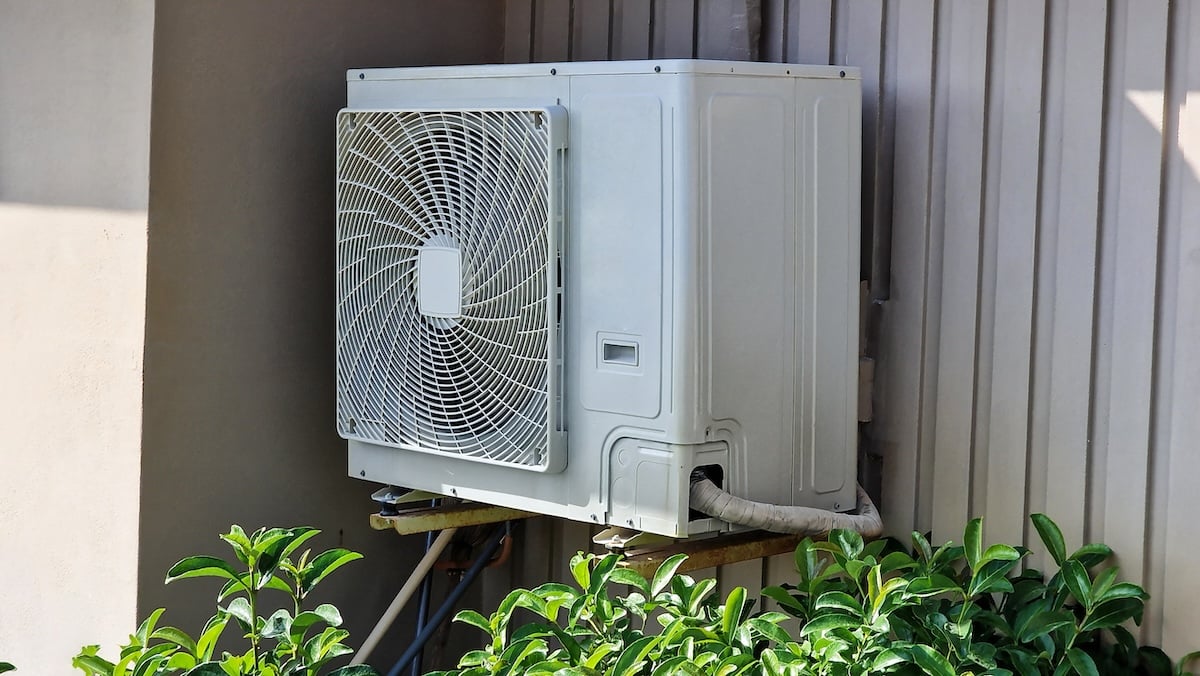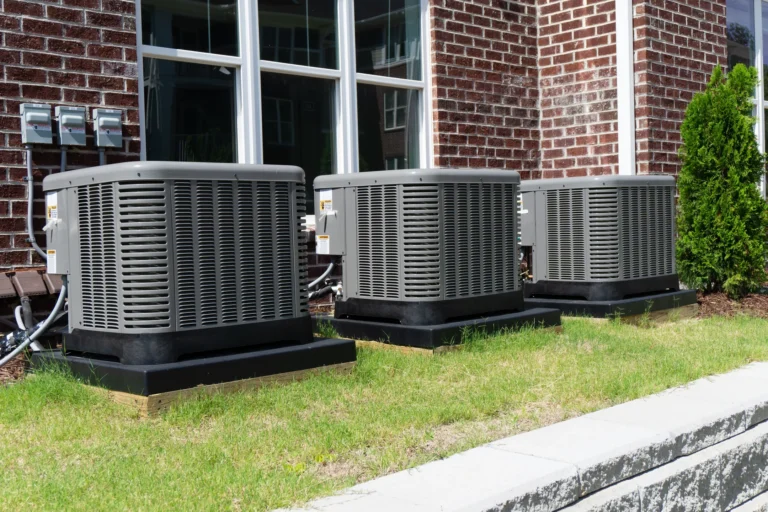
How Does a Mini Split Work? (Pros and Cons)
Curious about how a mini split system works and whether it’s the right choice for your heating and cooling needs? If you’re considering an upgrade to your home comfort system, mini splits can offer an efficient and flexible option.
In this guide, we’ll walk you through everything you need to know about mini split systems, including:
- how does a mini split work and their key components
- The benefits of choosing a mini split system
- Potential drawbacks to consider
🤔 What Is a Mini Split System?

A mini split, also known as a ductless mini split, is a heating and cooling system that doesn’t rely on ductwork to distribute air. Instead, it uses an indoor unit connected to an outdoor compressor through a small conduit. This design allows for zoned temperature control in specific areas of your home.
How Mini Splits Work
Mini splits operate by transferring heat between the indoor and outdoor units through a refrigerant cycle. Here’s a closer look at their two main components:
- Outdoor Unit: Contains the compressor and condenser, absorbing heat from inside your home during cooling or capturing heat from outside during heating, depending on the season.
- Indoor Unit: Mounted on a wall or ceiling, it blows warm or cool air directly into the room and can be controlled independently for customized temperatures in different zones.
- Connecting Conduit: Slim conduit links the units with power cables, refrigerant tubing, and a condensate drain line, allowing for faster, less invasive installation compared to traditional ducted systems.
✅ 6 Benefits of Mini Split Systems

When it comes to home HVAC systems, mini splits offer several standout benefits. Here’s why they’re becoming increasingly popular:
1. Energy Efficiency
Traditional ducted HVAC systems can lose up to 30% of energy through leaky ductwork, particularly in areas like attics or crawl spaces where ducts are exposed to extreme temperatures. Mini split systems eliminate this energy loss by delivering air directly to the room through a wall-mounted unit. This direct delivery not only enhances energy efficiency but also reduces utility bills over time. By avoiding ductwork altogether, mini splits ensure that conditioned air is used efficiently, making them an environmentally friendly and cost-effective option.
2. Zoned Temperature Control
One of the biggest advantages of mini split systems is their ability to provide zoned temperature control. Each indoor unit operates independently, allowing you to customize the temperature in different rooms or “zones” according to individual preferences. For instance, you can keep the living room cool while setting a warmer temperature in the bedrooms. This feature is especially useful for households with varying comfort needs or for spaces that are used infrequently. Zoned control also helps reduce energy waste by only heating or cooling the rooms you’re using.
3. Ease of Installation
Mini split systems are much easier to install compared to traditional central air systems, which require extensive ductwork. Since mini splits don’t rely on ducts, installation is less invasive and can be completed in a fraction of the time. The indoor and outdoor units are connected by a small conduit, which only requires a small hole in the wall. This makes mini splits an ideal choice for older homes, renovations, or rooms that lack existing ductwork. Additionally, the streamlined installation process minimizes disruption to your home and saves on installation costs.
4. Quiet Operation
Mini split systems are designed with noise reduction in mind, ensuring that both the indoor and outdoor units operate quietly. The indoor units are equipped with advanced motors and fans that minimize sound, making them ideal for bedrooms, offices, or any space where a peaceful environment is essential. Similarly, the outdoor units are engineered to produce minimal noise, so they won’t disturb your outdoor activities or your neighbors. Compared to traditional HVAC systems, mini splits offer a much quieter and more comfortable experience.
5. Improved Air Quality
Mini split systems come equipped with advanced filtration technologies that improve indoor air quality. These filters can capture dust, pollen, allergens, and even bacteria, creating a healthier living environment. Some models also include features like dehumidification, which helps maintain optimal humidity levels and reduces the risk of mold growth. With regular filter cleaning or replacement, mini splits can significantly enhance the air you breathe, making them a great option for households with allergies or respiratory concerns.
6. Compact and Versatile Design
Mini split systems are designed to be sleek, compact, and unobtrusive, making them easy to integrate into any room. The indoor units are available in various styles, such as wall-mounted, ceiling-mounted, or floor-standing, allowing you to choose the option that best suits your space. Their small size and flexibility make them ideal for a wide range of applications, from bedrooms and living rooms to home offices and sunrooms. Whether you’re adding comfort to a single room or an entire home, mini splits can be tailored to meet your specific needs without compromising on aesthetics.
🔎 Drawbacks to Consider

While mini splits offer numerous advantages, it’s important to weigh any potential drawbacks before making your decision.
Higher Upfront Cost
Mini split systems typically come with a higher initial price tag compared to other cooling options like window units or central air systems (if you already have ductwork in place). Purchasing the system itself, along with installation costs, can seem daunting for many homeowners. However, this upfront investment often pays off in the long run. Mini splits are highly energy-efficient, using less electricity than traditional HVAC systems, which can lead to significant savings on energy bills over time. For those looking to reduce their long-term energy costs, the higher upfront cost can be seen as a worthwhile tradeoff.
Aesthetic Considerations
One potential drawback of mini split systems is their visibility. Unlike central air systems, where the ductwork and vents are often hidden, mini split indoor units are mounted on the wall or ceiling, making them a noticeable addition to a room. For those with specific interior design preferences, this may pose a challenge. However, modern mini split units are designed with aesthetics in mind. Many feature a sleek, minimalist design that blends well with modern décor and avoids being overly intrusive. For some, the compact and contemporary look of a mini split can even enhance the room’s overall style.
Regular Maintenance
To ensure optimal performance and energy efficiency, mini split systems require regular upkeep. One of the most important maintenance tasks is cleaning the filters, which can become clogged with dust and debris over time. Dirty filters reduce efficiency and can negatively impact air quality. In addition to filter cleaning, mini splits may also need occasional professional servicing to inspect and maintain refrigerant lines, ensuring the system runs smoothly. While this maintenance schedule might seem like extra effort compared to simpler cooling options, the payoff is a system that performs efficiently and reliably for many years.
👉 What’s Next? Upgrade Your Comfort Today
Understanding how a mini split system works is key to making the best decision for your home’s comfort and energy efficiency. At Bob’s Air Conditioning, we pride ourselves on our expertise and dedication to providing top-notch HVAC services.
Whether you need help choosing the right mini split, installing it seamlessly, or maintaining your current system, our team has the experience and commitment you can trust. Let us help you create a comfortable, efficient home. Contact Bob’s Air Conditioning today to schedule your consultation or installation!
Ultimate Comfort Awaits


